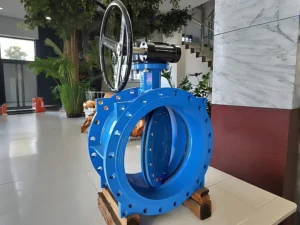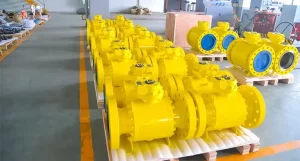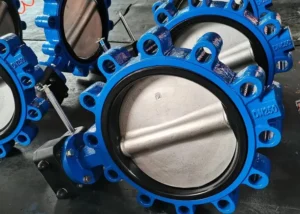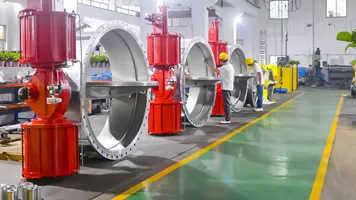I. The Critical Role of Gate Valves in Power Plant Steam Systems
- Main steam lines: Typically operate at 10–18 MPa (100–180 bar) and 500–600°C, carrying superheated steam with minimal moisture.
- Reheat steam lines: Operate at 3–5 MPa and 500–600°C, with lower pressure but equally high temperature.
- Auxiliary steam lines: Include feedwater heaters, deaerators, and turbine seals, with pressures ranging from 0.5–4 MPa and temperatures up to 350°C, often containing wet steam or condensate.
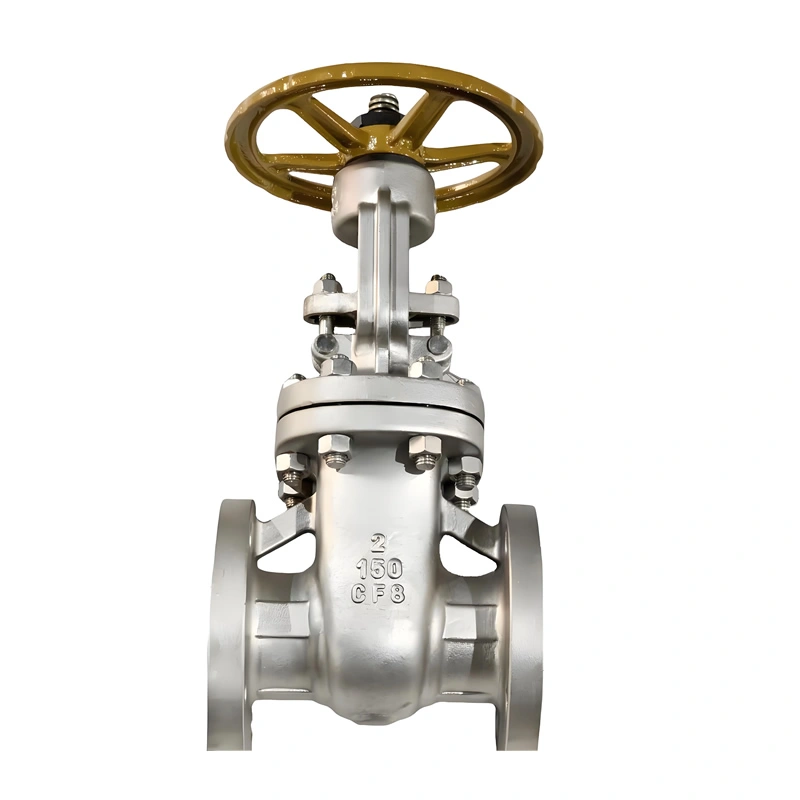
In all these scenarios, steam’s high energy density (≈2700 kJ/kg at 500°C/10 MPa) means even minor leakage (e.g., 1 kg/h) can result in annual energy losses exceeding 23,000 kWh. Worse, high-temperature steam leakage can erode adjacent components, cause pipe vibrations, or pose safety risks to personnel. Thus, gate valves in steam lines must meet three non-negotiable requirements:
- Zero leakage in the closed position to prevent energy loss and safety hazards.
- Resistance to high-temperature creep and oxidation to maintain structural integrity over decades of operation.
- Minimal pressure drop when fully open to avoid reducing turbine efficiency.
II. API 600: The Benchmark for High-Reliability Gate Valves
Key Provisions of API 600 Relevant to Steam Service
- Pressure and temperature ratings: Covers Class 150 to Class 2500 (PN20 to PN420), with temperature limits tied to material strength. For Cr-Mo steel valves, this extends to 650°C, matching the highest steam temperatures in modern supercritical power plants.
- Material requirements: Mandates traceable, high-quality alloys with documented chemical composition and mechanical properties. For steam service, API 600 specifies Cr-Mo steels (e.g., ASTM A217 WC9, WC6) for valve bodies and bonnets, ensuring resistance to creep and oxidation.
- Design features:
- Full port design: When fully open, the bore diameter matches the pipeline, minimizing pressure drop (≤0.5 kPa at design flow for DN100 valves).
- Non-rising stems: For buried or confined installations (common in steam line manifolds), preventing stem exposure to ambient corrosion.
- Backseat design: A secondary seal between the stem and bonnet, allowing packing replacement without removing the valve from the line—a critical feature for reducing plant downtime.
- Testing and inspection: Requires 100% shell hydrostatic testing (1.5× rated pressure) and seat leakage testing (1.1× rated pressure with air or water). For steam service, additional testing (e.g., low-temperature brittle fracture resistance for cold-start conditions) is often specified.
Why API 600 Over Other Standards?
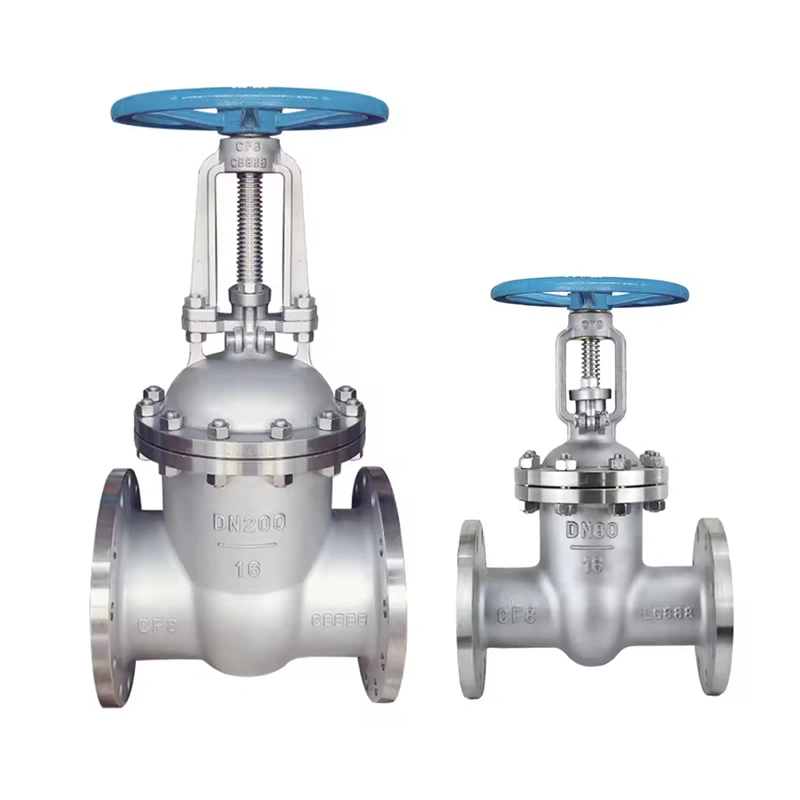
| Criteria | API 600 | ASME B16.34 |
|---|---|---|
| Material traceability | Full mill certificates, heat lot tracking | Basic material certification |
| Leakage allowance | Zero visible leakage (seat test) | Up to 0.1% of nominal flow (class-dependent) |
| Structural rigidity | Minimum wall thickness 10% higher | Standardized thickness based on pressure class |
| Fire testing | Mandatory (API 607) for critical service | Optional |
III. Cr-Mo Steel: The Material Solution for High-Temperature Steam
Why Cr-Mo Steel Outperforms Other Materials
- Creep resistance: At temperatures above 400°C, carbon steel undergoes “creep”—slow, permanent deformation under constant load. Cr-Mo steels form stable carbides (e.g., Cr₂₃C₆, Mo₂C) that pin grain boundaries, resisting creep. For example, 2.25Cr-1Mo steel (WC9) has a 100,000-hour creep rupture strength of ≈80 MPa at 500°C, compared to 30 MPa for carbon steel (WCB) under the same conditions.
- Oxidation resistance: High-temperature steam (especially with >5% oxygen) oxidizes metal surfaces, forming scale that can flake off, block lines, or erode valve seats. Chromium in Cr-Mo steels forms a dense Cr₂O₃ oxide layer, acting as a barrier to further oxidation. At 600°C, 9Cr-1Mo-V (T91) steel exhibits an oxidation rate 1/5 that of 304 stainless steel.
- Thermal fatigue resistance: Steam lines experience cyclic temperature changes (e.g., startup/shutdown), causing thermal expansion and contraction. Cr-Mo steels have low thermal expansion coefficients (≈11×10⁻⁶/°C for 2.25Cr-1Mo) and high thermal conductivity, reducing stress buildup during cycles.
Key Cr-Mo Steel Grades for Steam Gate Valves
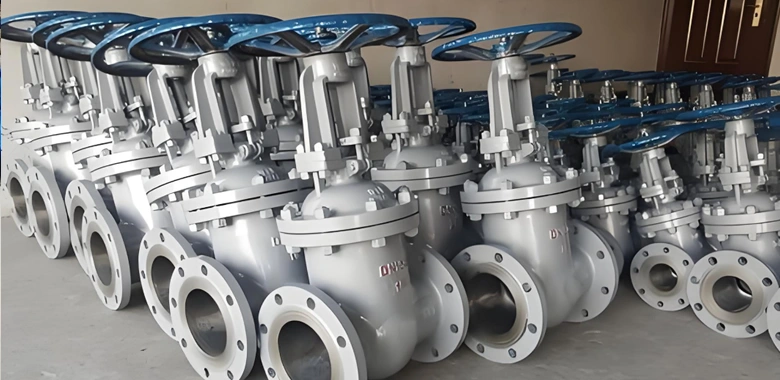
API 600 specifies several Cr-Mo grades, each optimized for specific temperature ranges:
| API 600 Grade | ASTM Designation | Cr Content | Mo Content | Typical Service Temp. | Application in Steam Lines |
|---|---|---|---|---|---|
| WC6 | A217 WC6 | 1.0–1.5% | 0.45–0.65% | Up to 450°C | Auxiliary steam, deaerator lines |
| WC9 | A217 WC9 | 2.0–2.5% | 0.9–1.1% | Up to 550°C | Main steam (subcritical plants), reheat lines |
| C12 | A217 C12 | 11.0–13.0% | 0.8–1.2% | Up to 650°C | Supercritical steam (600°C/25 MPa) |
IV. Design Features of API 600 Cr-Mo Steel Gate Valves for Steam Service
1. Gate and Seat Design: Ensuring Zero Leakage
- Wedge gate design: Most API 600 steam valves use a solid wedge (or flexible wedge for large diameters >DN300). The wedge’s angle (typically 5–10°) creates a “self-energizing” seal: as steam pressure increases, it forces the wedge tighter against the seats, reducing leakage.
- Seat hardfacing: To resist erosion from wet steam (which carries water droplets acting as abrasives), seats are hardfaced with alloys like Stellite 6 (Co-Cr-W) or Colmonoy 5 (Ni-Cr-B-Si). These alloys have a hardness of HRC 38–45, far exceeding the 25–30 HRC of Cr-Mo steel, ensuring the seat surface remains intact even after 10,000 cycles.
2. Bonnet and Stem: Containing High-Pressure Steam
- Bolted bonnet: Preferred over welded bonnets for steam service, as it allows inspection and maintenance of internal components. API 600 specifies forged bonnets (not cast) for Cr-Mo steel valves, eliminating porosity that could lead to leakage.
- Stem material and coating: Stems are made from 13Cr steel (A182 F6a) or Cr-Mo steel (F22) for high-temperature strength. A hard chrome plating (50–100 μm thick) reduces friction between the stem and packing, extending packing life.
- Packing system: For temperatures up to 600°C, packing consists of multiple rings of flexible graphite (reinforced with Inconel wire) compressed by a gland. Graphite retains elasticity at high temperatures, maintaining a seal even as the stem expands. API 600 requires a minimum of 4 packing rings for Class 600 and higher, ensuring redundancy.
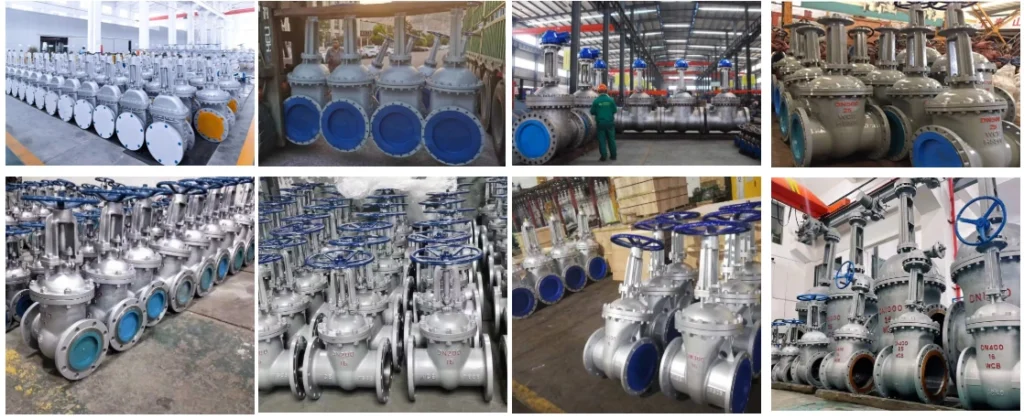
3. Body Design: Withstanding Thermal and Pressure Stress
- Forged vs. cast bodies: For high-pressure steam (Class 1500+), API 600 requires forged bodies (ASTM A182 F22 for 2.25Cr-1Mo) to avoid casting defects. For lower pressures (Class 300–600), cast bodies (A217 WC9) are acceptable but undergo 100% ultrasonic testing to detect flaws.
- Flange connections: API 600 specifies raised-face or ring-type joint (RTJ) flanges. RTJ flanges are preferred for Class 900+ steam lines, as their metal-to-metal seal (using a grooved ring) resists blowout under high pressure.
- Thermal expansion compensation: Large-diameter valves (>DN400) include a “bellows seal” between the body and bonnet to absorb thermal expansion, preventing binding of the stem or gate.
V. Manufacturing Processes: Ensuring Consistency and Reliability
1. Material Preparation and Heat Treatment
- Melting and forging: Cr-Mo steel is melted in electric arc furnaces with vacuum degassing to reduce hydrogen content (<2 ppm), preventing hydrogen embrittlement. Forged components (bodies, bonnets, gates) undergo hot working at 1100–1200°C to refine grain structure, improving toughness.
- Heat treatment: Critical for Cr-Mo steels to develop creep resistance. For WC9 (2.25Cr-1Mo), the process is:
- Normalization: Heat to 900–950°C, hold 1 hour, air cool.
- Tempering: Heat to 700–750°C, hold 2 hours, air cool.
This produces a microstructure of tempered bainite, balancing strength (yield strength >310 MPa) and ductility (elongation >20%).
2. Machining and Finishing
- Precision machining: Gates and seats are machined to tight tolerances (±0.02 mm) using CNC lathes and grinders. The sealing surface finish is Ra 0.8–1.6 μm to ensure metal-to-metal contact.
- Hardfacing application: Stellite 6 is applied via gas tungsten arc welding (GTAW) with controlled heat input (<15 kJ/cm) to avoid melting the base Cr-Mo steel, which would weaken its properties. Post-weld heat treatment (PWHT) at 650°C relieves residual stresses.
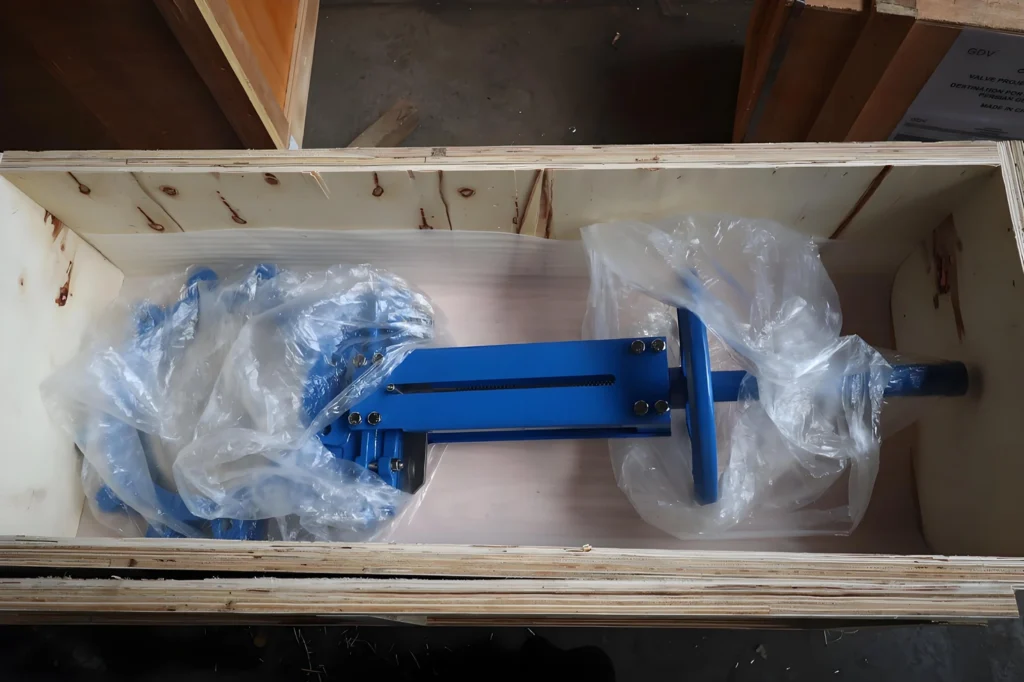
3. Testing and Quality Control
- Non-destructive testing (NDT):
- Ultrasonic testing (UT) of forgings to detect internal cracks.
- Magnetic particle inspection (MPI) of welds and hardfaced surfaces to find surface defects.
- Spectroscopic analysis to verify chemical composition of Cr-Mo steel and hardfacing alloys.
- Performance testing:
- Shell test: 1.5× rated pressure with water for 30 minutes, no leakage.
- Seat test: 1.1× rated pressure with air; leakage must be <0.1 bubbles/minute (visible bubble test).
- Operational test: 10 full open/close cycles to ensure smooth operation without binding.
VI. Installation and Maintenance in Steam Lines
1. Installation Best Practices
- Flange alignment: Misalignment (>0.5 mm) causes uneven stress on the valve body, leading to leakage or cracking. Use laser alignment tools to ensure flanges are parallel and concentric.
- Torque control: Bolted flanges and bonnets require precise torque (per API 600 tables) to avoid over-tightening (which distorts the body) or under-tightening (which allows leakage). Use calibrated torque wrenches.
- Pre-heating: For large valves (>DN300) in cold environments (<5°C), pre-heat the valve to 50–100°C before startup to avoid thermal shock when hot steam is introduced.
2. Maintenance Procedures
- Lubrication: Stem threads and gate guides are lubricated with high-temperature grease (e.g., molybdenum disulfide-based) rated to 600°C. Re-lubricate every 6 months or after 100 cycles.
- Packing replacement: When leakage occurs around the stem, replace packing rings one at a time to maintain gland load. Never reuse old packing—graphite hardens over time at high temperatures.
- Inspection intervals:
- Class 150–300 valves: Inspect annually (leakage, operation).
- Class 600+ main steam valves: Inspect every 3 years, including removal of the gate to check for seat erosion.
VII. Performance Validation: Case Studies in Power Plants
Case Study 1: Subcritical Coal-Fired Plant (500 MW)
Application: Main steam line (540°C, 16 MPa)
Valve Specs: API 600, Class 1500, DN200, WC9 body, Stellite 6 seats
Performance: Installed in 2015, the valve underwent 12 major startups/shutdowns and 200+ partial cycles (for load adjustments). As of 2024, inspection showed:
- Seat erosion: <0.01 mm (within API 600 allowances).
- Stem leakage: Zero (packing replaced once in 2021).
- Body integrity: No cracks or deformation (UT testing confirmed).
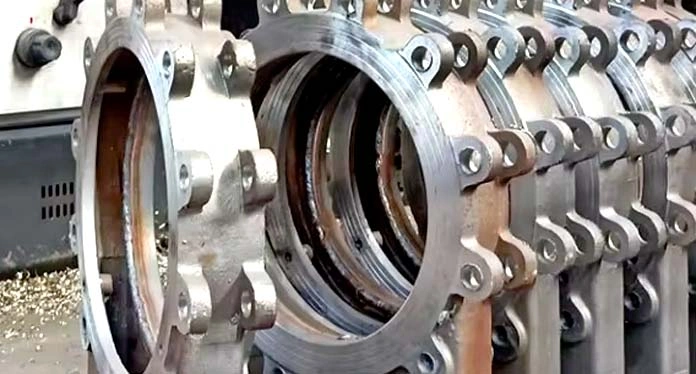
Case Study 2: Combined Cycle Gas Turbine (CCGT) Plant (800 MW)
Application: Reheat steam line (565°C, 4 MPa)
Valve Specs: API 600, Class 600, DN300, C12 body, flexible wedge gate
Performance: Installed in 2018, the valve operates in a cyclic regime (daily startup/shutdown). Key metrics:
- Pressure drop when open: 0.3 kPa (vs. 1.2 kPa for the replaced butterfly valve), improving turbine efficiency by 0.2%.
- Leakage rate: <0.001 kg/h (measured via thermal imaging), translating to annual energy savings of 21,000 kWh.
VIII. Sizing and Selection for Steam Lines
1. Determine Pressure and Temperature Ratings
- Pressure class: Based on maximum operating pressure (MOP) of the steam line. For example, a line with MOP 10 MPa requires Class 1500 (rated to 17 MPa at 500°C).
- Temperature class: Use API 600’s pressure-temperature (P-T) tables to select the Cr-Mo grade. For 550°C steam, WC9 is suitable; for 600°C, C12 is required.
2. Size the Valve for Flow Requirements
- Full port design: Ensure the valve bore equals the pipe inner diameter (e.g., DN200 valve for DN200 pipe) to minimize pressure drop.
- Velocity limits: Steam velocity in the valve should not exceed 60 m/s (superheated) or 30 m/s (wet steam) to avoid erosion.

3. Choose End Connections
- Flanged: Raised-face (RF) for Class 150–300; RTJ for Class 600+ to handle high pressure.
- Welded: Socket-weld or butt-weld for small diameters (DN≤50) in tight spaces, but only if maintenance access is limited.
4. Select Actuation (If Required)
- Manual: Handwheel or gear operator for valves ≤DN300 with infrequent operation (e.g., isolation valves in auxiliary lines).
- Automated: Electric or hydraulic actuators for large valves (>DN300) or those requiring remote operation (e.g., main steam isolation valves).
IX. Procurement Considerations for Power Plant Buyers
- Manufacturer Certifications: Ensure the supplier has API 600 certification, with a quality management system (ISO 9001) and traceability for Cr-Mo steel (mill test reports, heat treatment records).
- Warranty and Service: Look for a minimum 5-year warranty covering material defects and leakage. Check if the supplier offers on-site maintenance (e.g., packing replacement, seat resurfacing) to reduce plant downtime.
- Total Cost of Ownership (TCO): A cheaper valve may cost more over time due to frequent repairs. For example, a $10,000 API 600 valve with 20-year life (TCO $500/year) is better than a $6,000 non-API valve with 5-year life (TCO $1,200/year).
- Supply Chain Reliability: Ensure the manufacturer can deliver spare parts (e.g., stems, seats) within 48 hours to avoid prolonged shutdowns.

In power plant steam lines, where high temperatures, high pressures, and cyclic operation demand uncompromising reliability, API 600 gate valves with Cr-Mo steel stand alone. Their compliance with API 600 ensures rigorous testing and design; their Cr-Mo steel construction resists creep, oxidation, and thermal stress; and their precision engineering guarantees zero leakage and minimal pressure drop.
For procurement professionals, these valves represent an investment in plant safety, efficiency, and longevity. By selecting API 600 Cr-Mo steel gate valves, power plants minimize downtime, reduce energy losses, and ensure decades of reliable operation—ultimately delivering more value than any cheaper, less robust alternative.


